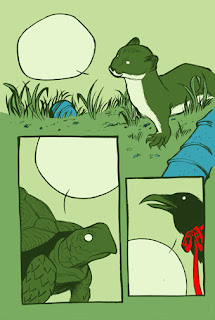Guest blogger and exquisite poet/writer Jillian Phillips knows a thing (or eleven!) about getting her work out there and read. Check out this great essay of advice she's written so you can get your work in print and noticed as well:
As
I continue to submit my work to journals in the hopes of getting
published, as well as reading submissions for other journals, I have
come to learn a few things about the process. Every “how-to-publish”
article gives you the same rules and tips. I am going to reiterate
some of them, because there is always someone who hasn’t
heard them yet or just doesn’t get it and needs to hear it again. I
am presenting these learned lessons in a list to keep them organized.
They are in no particular order.
THE
BASICS:
- No matter how many times it gets said, some people just don’t pay attention. The easiest way to get rejected? Typos. Proofread your work! You have pored over your work, agonized over its composition, and finally gathered the confidence to submit it. Do not make the mistake of forgetting to examine your submission like you would a strange-looking mole on your skin. Seriously, in a world where editors have to spend hours reading hundreds of submissions, the easiest way for them to decide between equally great works is to reject the one that spelled a word wrong or used “your” instead of “you’re”. Do not rely on spell check. It is NOT your friend!!! If you need convincing, YouTube “The Impotence of Proofreading”. (Yes, I spelled that right.)
- Don’t send edits once you’ve already submitted. It should have been your best in the first place. However, revising is good. If it gets rejected, go ahead and throw in that new material before you submit it again. If you’re accepted without the edit, roll with it. You can always use that new material in something else.
- Know who you are submitting to. Really read the journal. Most are online so you have no excuse for not getting a taste. And pay attention to what they want! Some journals want work similar to what they’re publishing; others, like RATTLE, want work that isn’t like what they’re publishing because they want to publish what’s missing. Which leads to…
- Do. Your. Research. Be in the know. The easiest way to do this is to follow every journal that interests you on Facebook, Twitter, etc. Often, they will post submission deadlines, new works, and events. Sharing these is good karma and the bonus is that they occasionally post emergency calls. For example, I have seen several calls for creative nonfiction when the submissions they had already received were not up to par. Additionally, FB and Twitter offer suggestions of similar pages and people that you may not have known about. You need that information!!!
- Read the submission guidelines. Twice, three times, and one more for good measure. Another easy way to get rejected is by not formatting your submission in the way the journal wants. For instance, some journals require a specific subject line for email submissions. It seems arbitrary, but when hundreds, perhaps thousands, of submissions are coming in, the easiest way to weed through them is by setting their system to reject or spam any email that comes in without that subject line. It’s not just about rejection, though. It’s about respect. If you cannot respect someone who is going to decide the fate of the work you put your heart and soul into by doing something as simple as following a guideline, you probably shouldn’t be a writer. Respect may not get you everywhere, but disrespect will definitely get you nowhere. (If you have questions, however, most journals are happy to answer them. Most likely because it demonstrates respect for them and shows that you are serious and professional.)
WHAT
IS NOT IN WRITER’S MARKET, POET’S MARKET, ETC…
- It doesn’t hurt to friend writers of similar genres on FB, Twitter, etc. Some are just awesome people to follow, but the benefit is that it keeps you in the loop of what is going on in your writing area (by that, I mean poetry readings, new books coming out, symposiums, conferences on your favorite topic, et al.) Also, the higher caliber of writer they are, the more likely it is that they edit something. Now, don’t take that to mean “If we’re friends, they’ll publish me.” That is arrogant. Even if you do submit to them, don’t expect them to pull strings. Be published on the merit of your work. But, having friends who are editors means you get to learn about publishing from their side. From posts about pet peeves to interesting articles to events they post, you will learn. Some may even be willing to give you advice. If you ask very nicely.
- Another tip about getting to know editors/journals: read Duotrope Digest. Most writers know the benefits of this site (acceptance rates, submission trackers) but the editor interviews are incredible. You find their preferences, their pet peeves, what they’re looking for… things you may not get on other sites. Use it!
- Submit other stuff. If you write fiction, consider doing some essays on craft or book reviews for journals, review sites, etc. While it may not get your creative work published, it serves other purposes: A) People will know your name when your creative work comes out eventually (many book publishers want to see this stuff, it’s almost mandated that you have a presence somewhere). B) By reviewing, at least, you learn how readers see work and how critics examine it. Developing that eye is going to help you.
- (Also known as 7B) Consider volunteering as a reader for journals. It may give you a confidence complex seeing all the good stuff that’s out there (I’ve been there, it happens, you shall overcome), but using that critical information to your advantage will make you a better writer in the long run. It will teach you what editors are really looking for. Doing just this has made me pay more attention to my own work. I notice issues with my diction, when my images aren’t working together or hard enough, etc. It’s also made me more conscious of when my work is ready. Can it still be improved? Will I feel okay about asking someone to spend their time reading it when that time is precious?
- Don’t let rejection get you down. It happens. Get crafty and use them to make lampshades or cute decoupage. Really, it happens and does not mean there is no hope for you or your writing. As a reader, I hate having to say “No, Editor, they just don’t seem right” but I honestly haven’t seen anything incredibly bad. If you get comments, listen to them. Readers and editors who care enough to send you comments and actually take the time to do so should be paid attention to. You may not agree with what they say, and that’s fine. But consider them.
And
finally,
- Take rejection gracefully!!! DO NOT write hateful letters, bash the journal, or threaten the editors. A) In the world of social media, word gets around. Don’t be the writer no one wants to work with. B) Honestly, being ass really doesn’t help you. It just turns you into an anecdote. I know an editor who received an email from a guy who said he hoped a poop-shaped meatloaf fell on her head… Judging by that half-assed image (haha, pun not intended), he probably deserved that rejection. I’m sure he could have done better if he had put more time and thought into it.












